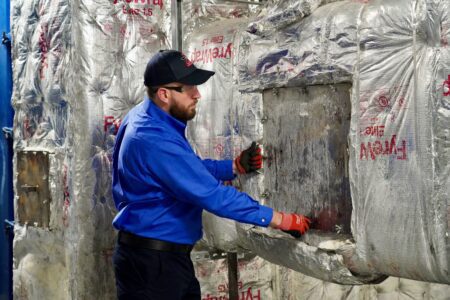Three essential strategies stand out in fire safety: flameproofing, fireproofing, and firestopping. Each plays a unique role in safeguarding buildings and ensuring the safety of occupants. This article delves into the definitions, objectives, and applications of these three critical fire prevention techniques, offering business owners a comprehensive understanding of their importance.

Flameproofing
Flameproofing refers to the process of treating materials to resist ignition and slow the spread of flames. The primary objective is to enhance the fire resistance of materials, thereby reducing the risk of fire-related incidents. Various materials, such as wool, hemp, silk, natural latex, cotton, linen, acrylic, and polyester, are treated to become flameproof. These treated materials are used in numerous applications, including stage draperies in theaters, window draperies and upholstery in hotels and hospitals, and decorative elements in public spaces.
Flameproofing plays a crucial role in overall building and facility fire safety. By treating materials to resist flames, the spread of fire can be significantly slowed, allowing more time for evacuation and emergency response. This preventive measure is essential in high-traffic areas with higher fire risk, ensuring that lives and properties are protected.

Fireproofing
Fireproofing involves applying materials or treatments to building structural elements to enhance their resistance to fire. The primary objective is to extend a structure’s time to withstand fire, allowing more time for safe evacuation and emergency response. Common fireproofing materials include intumescent coatings, cementitious coatings, and fire-resistant boards.
Key fireproofing applications include protecting steel structures, beams, and columns, which is critical for maintaining a building’s integrity during a fire. By enhancing the fire resistance of these structural elements, fireproofing helps to prevent collapse and maintain the building’s stability. This extended protection ensures that occupants can evacuate safely and emergency responders have sufficient time to control the fire.

Firestopping
Firestopping is the practice of sealing openings and joints in a building’s structure to prevent the spread of fire and smoke. The primary objective is compartmentalizing fires, limiting their spread to other building parts, and minimizing damage. Firestopping materials include fire-resistant sealants, intumescent materials, and firestop pillows and blocks.
The importance of firestopping lies in its ability to create barriers within a building, effectively containing fires within specific areas. This compartmentalization is crucial for preventing the spread of fire and smoke and protecting adjacent rooms and floors. Firestopping is especially important in buildings with complex layouts, such as hospitals, hotels, and large office buildings, where the rapid spread of fire can have devastating consequences.
Why Is This Important?
Flameproofing, fireproofing, and firestopping are three pillars of fire prevention that enhance buildings’ safety and resilience. By understanding and implementing these strategies, business owners can better protect their properties against fire hazards. Total Fire Protection (TFP) offers comprehensive services in all three areas, providing expert solutions tailored to meet your building’s unique needs.




